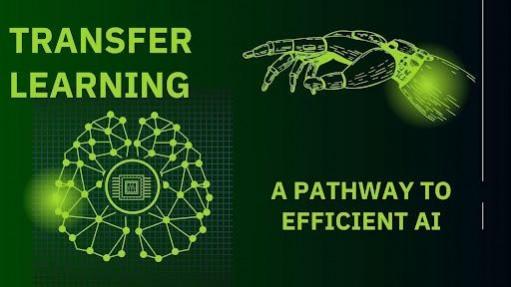
Transfer learning is revolutionizing the field of AI by enabling the use of pre-trained models for new tasks, significantly reducing the time and resources needed for training. Bikramjeet Singh explores the impact of transfer learning, demonstrating how this approach allows for efficient adaptation of machine learning models across various domains. From image recognition to natural language processing, transfer learning offers a practical solution for enhancing model performance while minimizing computational costs. As AI continues to evolve, transfer learning promises to drive further innovation and accessibility in the field.
The Core Principles of Transfer Learning
Transfer learning uses pre-trained models to apply knowledge to new, related tasks, greatly reducing the time and resources needed for training. Instead of building models from scratch for each task, practitioners can fine-tune models trained on large datasets for specific, smaller ones. This approach mirrors human cognition, where skills learned in one area are adapted to another. In machine learning, it means using previously learned features, like edge detection in images, to improve performance on new tasks, even with limited data.
Applications: From Image Recognition to NLP
Transfer learning has significantly impacted fields like image recognition and natural language processing (NLP). Pre-trained models can be fine-tuned for specific tasks, such as diagnosing diseases from medical images or identifying species in wildlife conservation, achieving high accuracy even with limited data. In NLP, transfer learning has revolutionized tasks like sentiment analysis and question-answering. Models like BERT fine-tuned on domain-specific data, enable advanced language understanding with minimal additional training, making NLP applications more accessible and improving areas like customer service and legal document processing.
Reducing Training Time and Enhancing Performance
Transfer learning offers a major advantage by drastically reducing training time. By utilizing pre-trained models, machine learning tasks can be completed in hours instead of days, enabling faster prototyping and innovation. This is especially valuable in industries like healthcare, where quick model adaptation can lead to timely diagnostic tools and better outcomes. Additionally, transfer learning enhances performance, allowing models to generalize more effectively and avoid overfitting, particularly when working with smaller datasets crucial in fields like healthcare, where large labeled datasets are often limited.
The Role of Resource Efficiency
Transfer learning not only reduces training time but also enhances resource efficiency. Training complex models from scratch is costly and resource-intensive, requiring significant computational power. By leveraging pre-trained models, organizations can cut down on hardware and energy costs, making AI development more accessible to smaller companies and academic institutions. Additionally, transfer learning offers a more sustainable approach, addressing concerns about the environmental impact of large-scale AI training by reducing energy consumption while maintaining high-performance levels.
Challenges and the Road Ahead
Despite its benefits, transfer learning has challenges. A key issue is negative transfer, where the pre-trained model's knowledge may not be relevant and can harm performance on a new task. Ensuring the model's relevance to the target task is crucial to avoid this. Another challenge is the need for domain-specific adaptations, especially in areas like healthcare and finance, where fine-tuning with domain expertise is essential. Integrating this specialized knowledge into transfer learning remains a critical focus of ongoing research.
Bikramjeet Singh's work on transfer learning highlights its transformative potential in the field of AI. By reducing training time, enhancing performance, and making AI development more resource-efficient, transfer learning is opening up new possibilities across industries. However, to fully realize its potential, ongoing efforts are needed to address challenges such as negative transfer and domain-specific adaptation. As AI continues to evolve, transfer learning will undoubtedly play a pivotal role in making machine learning more accessible, efficient, and impactful across a range of applications.

















